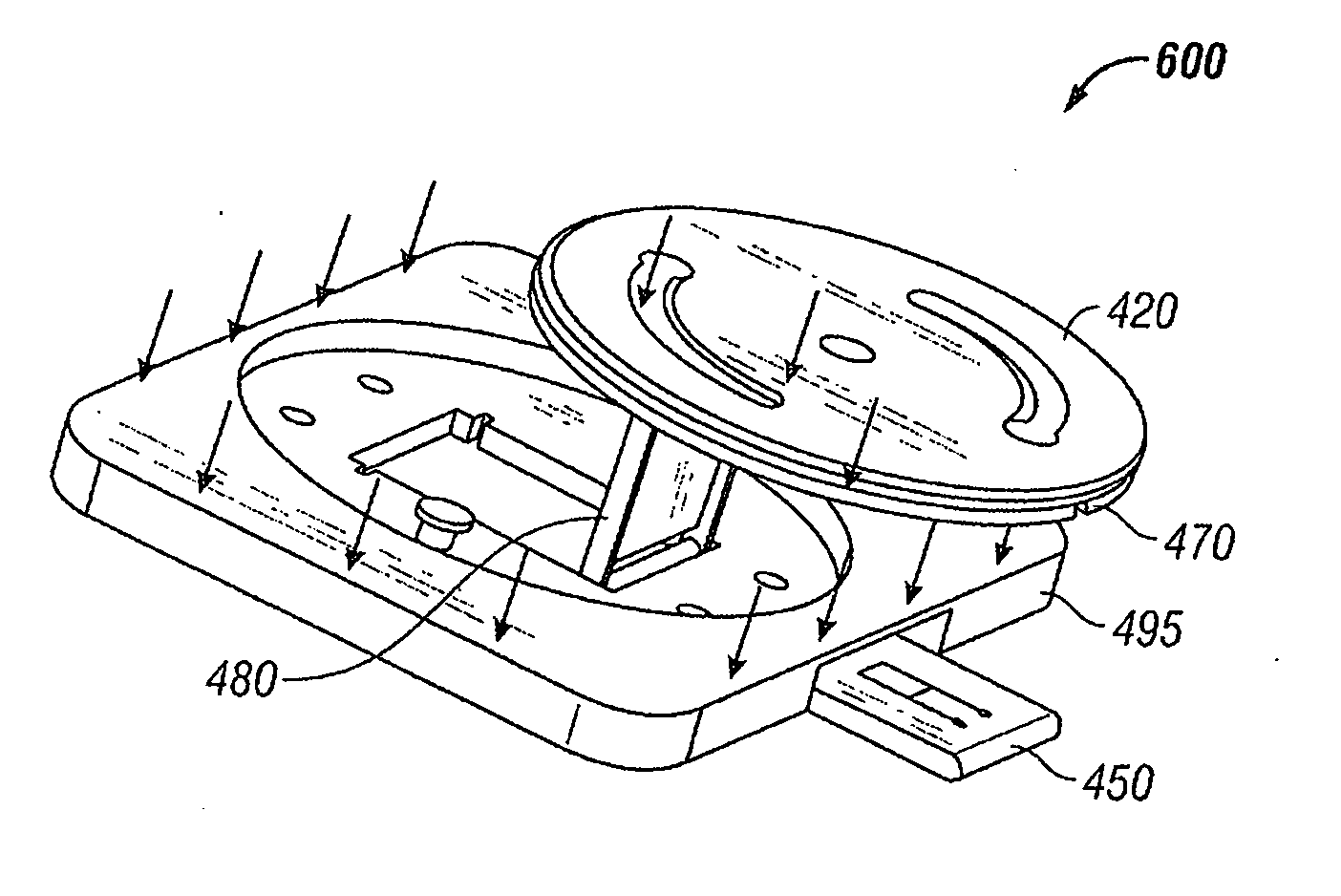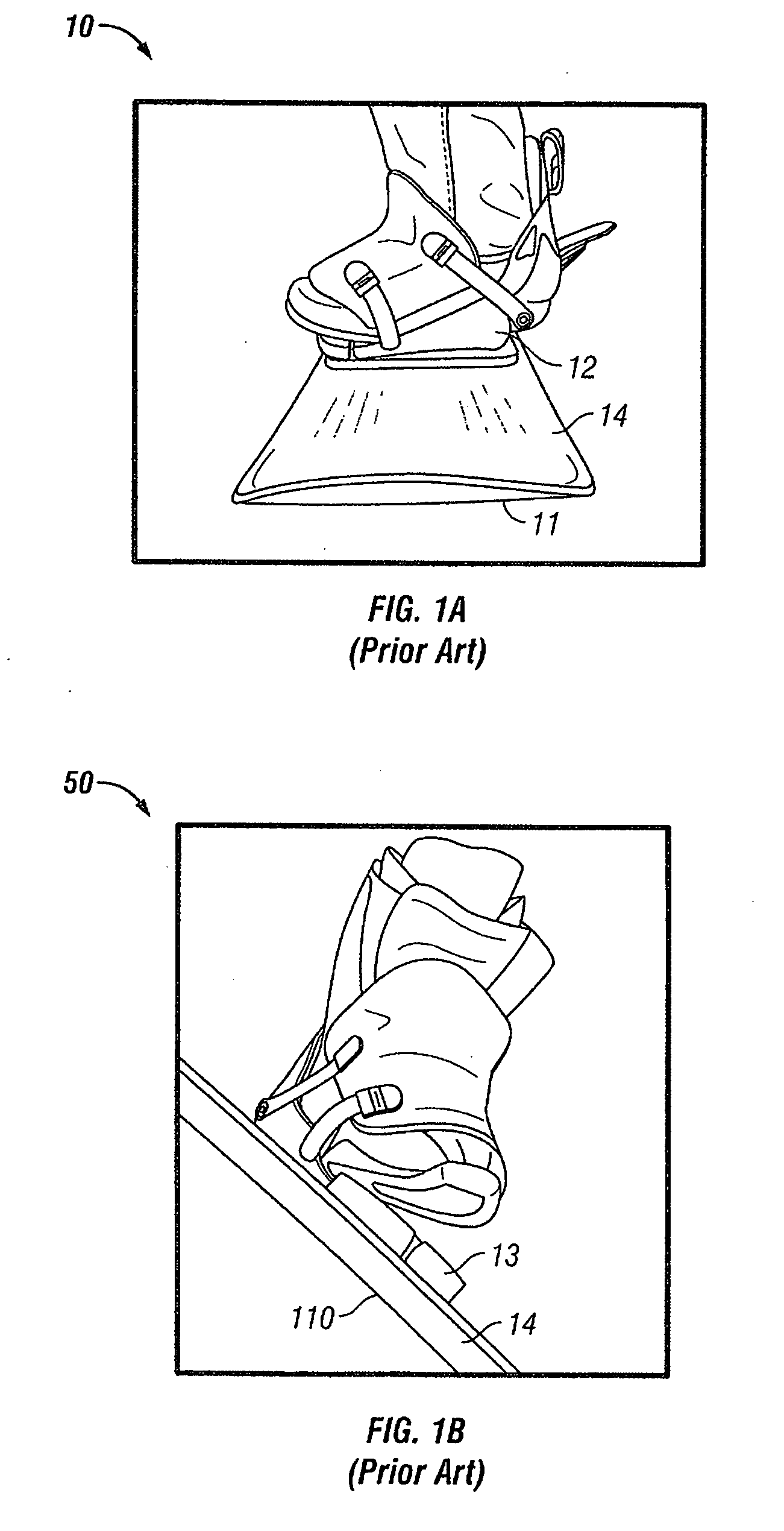Hinged rotatable binding system for snowboards
a rotatable, binding technology, applied in the field of snowboards, can solve the problems of pain, unnatural stance of users, pain, and discomfort of foot-moving snowboard users, and achieve the effects of reducing leg pain, simple assembly features, and cost-effective and light weigh
- Summary
- Abstract
- Description
- Claims
- Application Information
AI Technical Summary
Benefits of technology
Problems solved by technology
Method used
Image
Examples
Embodiment Construction
[0039]The particular values and configurations discussed in these non-limiting examples can be varied and are cited merely to illustrate at least one embodiment and are not intended to limit the scope thereof.
[0040]There are generally two types of snowboard bindings used for a soft snowboard. A strap binding typically includes one or more straps that extend across the rider's boot to secure the boot to the binding. In contrast, step in binding typically employs one or more strapless engagement members, rather than straps, into which rider can step to lock the boot into binding. The strapless engagement members are configured to engage with one or more corresponding engagement members on the boot. Some riders may find a strap binding inconvenient because a rider must unbuckle each strap of the rear binding after each run to release the rear boot when getting on a lift and must subsequently re-buckle each strap before the next run.
[0041]The problems associated with prior art binding s...
PUM
 Login to View More
Login to View More Abstract
Description
Claims
Application Information
 Login to View More
Login to View More - R&D
- Intellectual Property
- Life Sciences
- Materials
- Tech Scout
- Unparalleled Data Quality
- Higher Quality Content
- 60% Fewer Hallucinations
Browse by: Latest US Patents, China's latest patents, Technical Efficacy Thesaurus, Application Domain, Technology Topic, Popular Technical Reports.
© 2025 PatSnap. All rights reserved.Legal|Privacy policy|Modern Slavery Act Transparency Statement|Sitemap|About US| Contact US: help@patsnap.com



